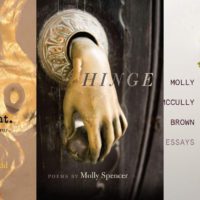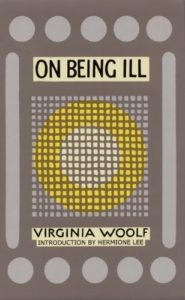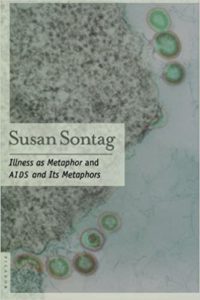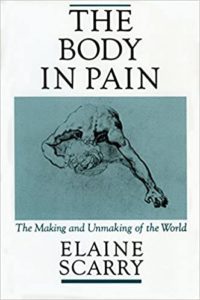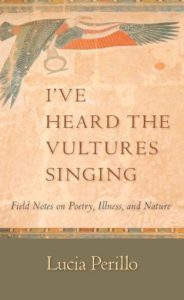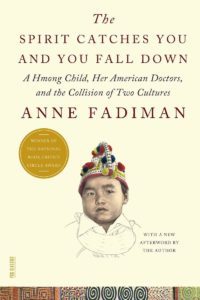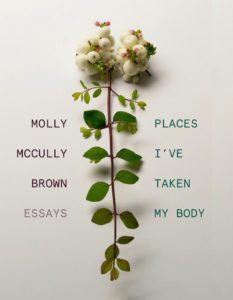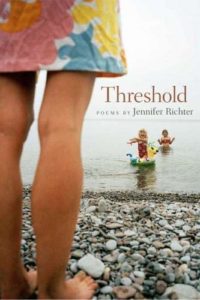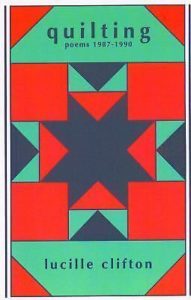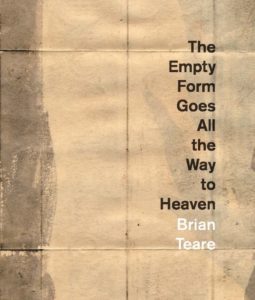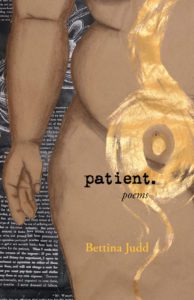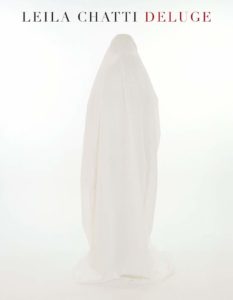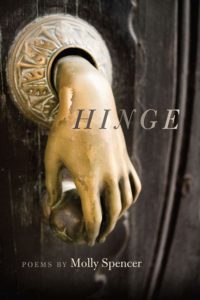According to the CDC, six in ten American adults have a chronic illness, and even illnesses that begin acutely and in crisis often morph into chronic forms. This is the case with cancer and AIDS which, over time, have become treatable diagnoses rather than death sentences. It’s also the case with COVID-19 for those patients’ whose symptoms persist after a period of acute illness in what some have begun to call Long COVID. The American narrative of illness and our healthcare system itself, however, are organized according to an idea of illness as beatable, as something to fight and prevail over, then be done with.
What to do, then, if your own illness or that of someone you love isn’t beatable? My chronic illness first hinted at itself in childhood, all but disappeared during adolescence and my early adult years, and then recurred with a vengeance in my late twenties. For most of the next ten years, I was passed along from doctor to doctor, many of whom thought I was making myself sick and none of whom could figure out what was wrong. When, at last, I found a doctor who believed me and was curious enough to persist until we found an answer, the diagnosis I received was of lupus: a shapeshifting disease in which the body attacks its own healthy tissues, causing joint pain and stiffness, uncomfortable skin rashes, fatigue, and in my case, a gastrointestinal tract that failed to absorb adequate nutrition. During those long years—and even now as I continue to learn how to live with my disease—these are the books that both comforted me and helped me frame my thinking about illness and the vulnerable body.
The truth is that if we live long enough, or are unlucky early, our bodies will fail us. So, while the books below are books I turned and turn to as a person with a life-changing, incurable illness, they are, in fact, for all of us.
***
Theory:
My impulse when confronted with nearly anything is to turn to The Literature, i.e, those works generally accepted to be seminal in a given field of thought. No doubt this list is incomplete—I find I can only take so much theory when it comes to my own lived experience of pain—but these books have reminded me again and again that stepping outside of my body and engaging my mind in the experience of illness is, at times, a useful exercise because it reminds me that, despite my illness and pain, I have a life of the mind, too.
On Being Ill by Virginia Woolf
This is the first title everyone points you to if you want to read about illness: a strange, book-length essay that Woolf begins by pointing to the lack of a literature of illness and arguing that illness should take its place with other great themes of literature and art like love, war, and jealousy. Strange, I say, because the essay moves through an array of subjects from language and religion to sky-watching and Shakespeare, until it concludes with, as noted in the introduction, “the entire life story of the Third Marchioness of Waterford.” While admittedly odd, the essay gives heed to some truths about the body—“all day, all night the body intervenes,” Woolf writes—and captures, for me, the altered state of consciousness illness can bring about, and the distance it puts between those who are ill and those who are not.
Illness and Its Metaphors by Susan Sontag
Written by Sontag during her own treatment for cancer, Illness and its Metaphors traces the mythologies and romanticization of illness through history and literature, the silences that often surround it, and the language used to discuss illness and treatment which, Sontag notes, is often rooted in warfare. While, thankfully, some of our language and cultural ideas about illness have shifted since the late 1970s when this book was published, Sontag was right that our culture’s shallow ideas about death, the harms of capitalism, and our collective proclivity toward violence—what she calls “the large insufficiencies of our culture”—have persisted beyond the usefulness of illness as metaphor.
The Body in Pain: The Making and Unmaking of the World by Elaine Scarry
This highly theoretical text begins by discussing the inexpressibility of pain and the failures of our language to describe it (indeed, I have often wished we had distinct words for pain of a physical nature versus emotional pain). Using a variety of sources from literature and art, documentation of torture, and political writings, Scarry discusses the role of regimes in inflicting pain that “unmakes” the world of the individual. She then explores how pain and imagination interact to become a “framing identity” for human beings as creators. While it’s not remotely reasonable to compare my pain from lupus to pain inflicted by torture, this book gave me the ability to think about pain as an element of creation, a comfort during my darkest days.
Practice:
Unlike the books that helped me engage with illness and pain intellectually, some books helped (and continue to help) me learn to live navigate my daily life—not to mention the medical system—with chronic illness.
I’ve Heard the Vultures Singing: Field Notes on Poetry, Illness, and Nature by Lucia Perillo
I side-eyed this book for years before reading it lest its examination of illness undo me by being too accurate, too real. It did, and it was. In this book, Perillo, who besides being a writer worked as a naturalist, takes her keen eye, honed by years of observing the natural world, and applies it to illness. Her illness was MS, a degenerative autoimmune disease, and she begins by discussing the silences our culture would have those of us with incurable diseases keep. Seriously ill animals in the wild, she points out, are often shunned and become easy prey. In one of my favorite metaphors for chronic illness, and perhaps the most apt one I’ve encountered, Perillo writes of going skiing shortly after receiving her diagnosis and her wish that she might die in an avalanche rather than live with a debilitating disease: “Funny how I did end up in the avalanche after all, not dead.”
The Spirit Catches You and You Fall Down by Anne Fadiman
This is the story of Lia Lee, a Hmong child living with her family in California who is diagnosed with severe epilepsy, and the cultural differences and misunderstandings that adversely affected her care. While some of the misunderstandings were on the part of Lee’s parents and influenced by Hmong cultural ideas about illness and epilepsy, some of the problems were caused by doctors who were unwilling to consider Lee’s cultural background when planning her care. I read this book early in my undiagnosed years, and it reminded me that doctors are not infallible: their training, cultural beliefs, and subconscious biases can harm patients. It also helped me keep my situation in perspective: for every challenge I had in getting treatment, this Hmong family’s challenges in the system of white supremacy were exponentially greater.
Places I’ve Taken My Body: Essays by Molly McCully Brown
This collection of essays explores living in a body limited by cerebral palsy and pressing against those limits in order to live one’s authentic life—for Brown, her life as a writer. Although, unlike Brown’s, my disability is mostly invisible (unless you count an occasionally awkward gait), I could relate (no doubt to a lesser degree) to the simultaneous triumph and self-sabotage of attempting something that would make me feel worse later, the unwanted pity and praise from others, the angry determination not to need help, the “fighting with the air.” An illness that shifts and worsens changes your relationship with the past, and one of the greatest gifts of this collection for me was as an invitation to look back on former selves who lived in different bodies than the one I was born in, or the one I have now, and to mark and grieve them: the body that conceived my children; the last body to climb the dune. I also appreciated the fact that, in these essays, there is no lasting victory or even comfort, but also—and importantly—no defeat. Instead, a brokered peace, as Brown calls it, writing, “[m]ostly I don’t want a different life or even a different body.” I think I know a version of that feeling and the significance of that “mostly.”
Poetry Touchstones
I am a poet first and foremost, so it’s inevitable that the most important reading touchstones for me throughout my illness have been poetry collections—some old, and some new:
Threshold by Jennifer Richter
This was the first poetry collection engaging with illness that I read in the throes of my illness. I made it to the sixth poem without crying, then turned the page to read “Today Is a Capital M”—that too-familiar pill box labeled for days of the week brought in front of my eyes. This is a book about dailiness—motherhood, wifehood, daughterhood—while undiagnosed pain and illness claw at the door. This was my primer for enduring what I had to endure, and my primer for writing about it. To this day, its final line is my comfort and my rallying cry: “Now the mother’s strong enough.”
Quilting by Lucille Clifton
When you need to remember the mythic strength and meaning of your body, read this. Despite children lost and children living, despite illness, despite Blackness amid white supremacy, despite toil, Lucille Clifton celebrates the woman’s body—the wise woman’s body that emerged from Eden—and reminds me to celebrate mine. When I despair of this body I live in, her words remind me that my body, too, is “beautiful and faithful and ancient / and female and brave.”
The Empty Form Goes All the Way to Heaven by Brian Teare
Brian Tearre’s The Empty Form Goes All the Way to Heaven locates a life—and a body in the throes of illness—in relation to art by engaging with the work of Agnes Martin: “I lean my thinking against it,” Teare writes in one poem. Teare arranges the poems on the page so that they can be read in multiple ways, often mimicking Martin’s grid (think of contrapuntal poems, but with more varied layouts). For me, Teare’s formal decisions and the changeable semantics they enact speak to the shifting consciousness of illness, the disorientation of the body in distress, and the egregiously complicated healthcare system born of capitalism. I also love this book—regardless of its subject matter—for its immersion in art and the beauty and delicacy of language made into poetry: a reminder that such consolations are available to us.
Patient by Bettina Judd
Engaging with persona, etymological exploration, and history, these heavily researched poems document how the field of gynecology in the US was built on the bodies of enslaved Black women through unauthorized experimentation and a worldview that made them into spectacle, less than human. Judd bears witness to and names the patients themselves and the many harms done to them at the hands of (white, male) doctors. She intersperses this narrative with the speaker’s own, contemporary “ordeal with medicine” about which she writes, “The research question is: Why am I patient?”—a question with many unsettling layers and answers. The restraint of Judd’s mainly short and meditative lines magnifies the suffering they tell of. Patient. is a vivid reminder of the many ways white bodies have benefitted from the dehumanization and destruction of Black bodies.
Deluge by Leila Chatti
Chatti’s lyrical debut explores the norms, judgments, and silences surrounding women’s bodies, sexuality, and fertility—and the shame laid at our feet when things go awry with those parts of our bodies made for making. There’s a painful beauty cut through by darkness in these poems that gives voice to the many moods of illness by praying and looping, insisting and crying out, and by fashioning an “ordinary and terrible” divine: a Mary “crouched and cursing,” like any woman or beast laboring a child out of her body; a god/God whose plans for us are not, in fact, good. Chatti’s formal experimentation in Deluge is method for working both within and against the strictures of illness. This book tells of things women are expected to hide about our bodies and reveals them as art.
And to close out this wonderful list, we just had to include Molly’s second collection of poetry, Hinge, out now from SIU Press! – Ed.
Hinge by Molly Spencer
Readers enter “a stunted world,” where landmarks—a river, a house, a woman’s own body—have become unrecognizable in a place as distorted and dangerous as any of the old tales poet Molly Spencer remasters in this elegant, mournful collection. In myth and memory, through familiar stories reimagined, she constructs poetry for anyone who has ever stumbled, unwillingly, into a wilderness. Spencer alternates between the clinical and the domestic, disorientation and reorientation, awe and awareness. With the onset of a painful chronic illness, the body and mental geography turn hostile and alien. In loss and grief, in physical and psychological landscapes, Spencer searches the relationship between a woman’s body and her house—places where she is both master and captive—and hunts for the meaning of suffering. Finally, with begrudging acceptance, we have a hypothesis for all seasons: there is suffering, there is mercy; they are not separate but are for and of one another.
